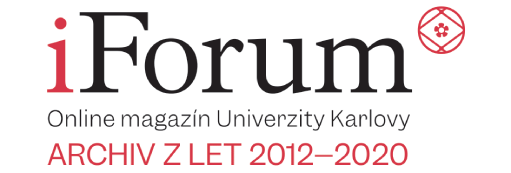31. ledna 2010
The Malach Visual History Centre: the Gateway to 52,000 Life Stories
The Malach Visual History Centre of Charles University is currently one of the three European access points to the archive of the USC Shoah Foundation Institute for Visual History & Education. The opening ceremony took place in January 29, 2010 at the Charles University Faculty of Mathematics and Physics, which provides access to the archive.
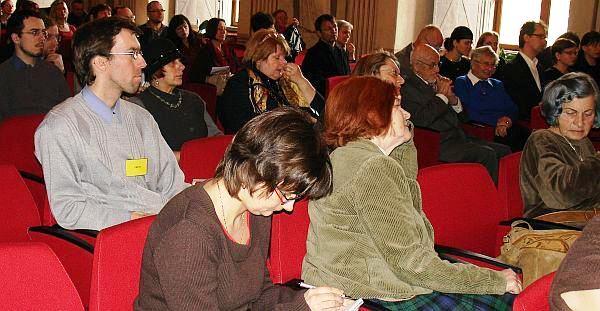
Speakers included the Dean of the faculty prof. Zdeněk Němeček, Rector of the university prof. Václav Hampl, and Stephen Smith, executive director of the USC Shoah Foundation Institute. In his speech, Smith reminisced on his first meeting with Steven Spielberg, the director of Schindler's List, a movie that strived for the horrors of Holocaust never to be forgotten. The Shoa Foundation follows the same goal: it captures the true stories of people who survived the concentration camps. In the early 1990's, Stephen Smith co-founded the British centre for Holocaust studies, a project that went on to intersect with Spielberg's research for Schindler's List. “Each narrative contains valuable historical information. The victims talk about life, racism, hatred, resistance, courage and survival, which is very important for our future communication with the whole world. That is the reason why I am happy to be in Prague and have the privilige open this new centre”, said Smith, noting that every time he meets Steven Spielberg, the filmmaker reminds him that he promised Holocaust survivors that their memories would be preserved for the future generations.
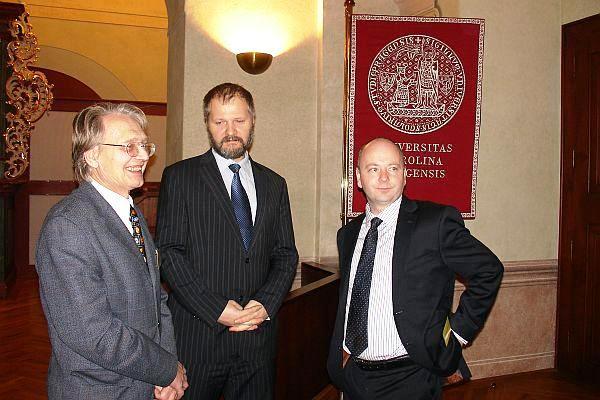
From left: Dean of the Faculty of Mathematics and Physics, Zdeněk Němeček, Rectors of Charles University, Václav Hampl, and Stephen Smith, executive director of the USC Shoah Foundation Institute
The Rector of Charles University prof. Hampl said that the recorded narratives and life stories should be a memento for this and future generations: “As time passes, even the eye-witnesses pass away and take with themselves their memories and experiences, the testimonies whose value for both history and humanity is irreplaceable and invaluable. Their stories are warnings against intolerance and indifference, which pose a huge problem even know, as extremism is on the rise. How else could we avoid the grave mistakes with terrible consequences than to learn from the tragic mistakes and short-sighted decisions of the past?” He also stressed the importance of the centre for further research: “As a rector of a university which integrates human knowledge from the widest variety of disciplines, I have to emphasize the centre's contribution to interdisciplinary cooperation, which connects fields often deemed to be isolated from each other. Without any doubt, there are not many projects like this that bring together historians, teachers, doctors, psychologists, anthropologists, sociologists, political scientists, lawyers and even filmmakers – not to mention the centre is hosted by the Faculty of Mathematics and Physics.”
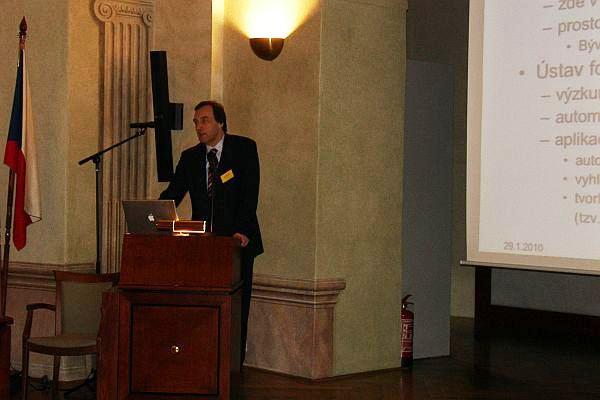
prof. Jan Hajič, director of the Institute of Formal and Applied Linguistics of the Faculty of Mathematics and Physics, introduced the technology behind the project
The database and its interface were introduced by Martin Šmok, consultant for the International Programmes Institute in Prague, who also provided guidelines on how the archive can be used in the education process.
Each interview records the memories of events that took place before, during and after World War II, along with images, documents, photographs and other artifacts provided by the interviewees. The average length of an interview is 2 hours. The archive includes 4,557 stories of witnesses born in Czechoslovakia, 566 interviews were recorded in the Czech Republic and 656 in Slovakia. “Besides the personal narratives of people who the Nazis marked as Jews, the archive also captures the history of the whole 20th century as seen by those who experienced it – including the wars, totalitarian regimes, emigration, persecution and other hardships. At the same time, the interviews are done in firm belief that people will eventually learn from the history”, said Mr. Šmok. The interviews cannot serve as education material by themselves, but the experience of the Institute from many other countries proves that they provide teachers with information that can supplement, enhance historical facts, while also making them more personal.
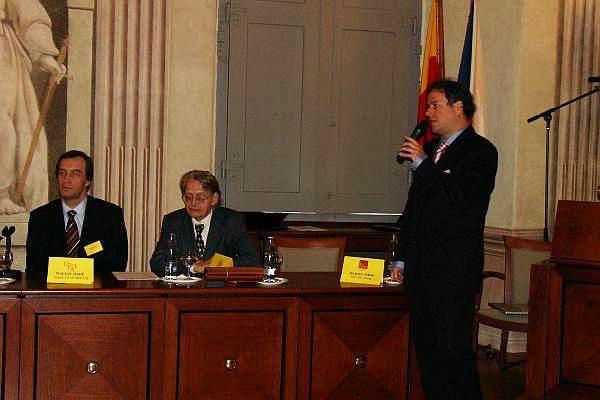
“The archive is not a collection of political statements, but a collection of life stories of actual human beings“, said Martin Šmok about its potential uses in education.
(Lucie Kettnerová)
Translation: Jaroslav Švelch
